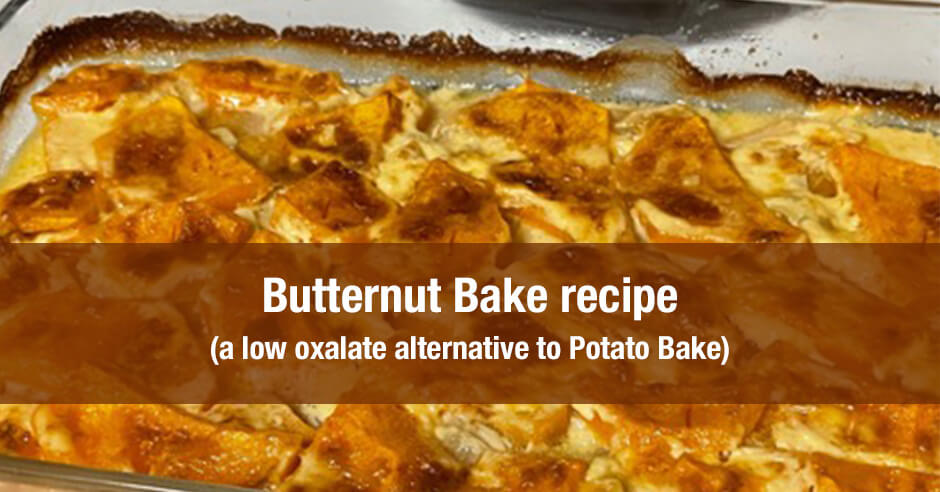
Do you have dietary oxalate issues (pain, anxiety, insomnia, restless legs, hearing loss, eye issues, unresolved thyroid issues, bladder issues and more) and yet really miss potatoes and even sweet potatoes, both of which are very high oxalate?
I modified a family favorite recipe called Potato Bake (from Pips and my sister) to be a low oxalate option called Butternut Bake.
If you’re new to the dietary oxalate issues you can read more about this below. I’m finding it to be underappreciated as an issue especially in menopausal women when symptoms seems to be more severe in susceptible individuals.
And if you don’t have dietary oxalate issues, you can certainly enjoy this recipe too.
Butternut Bake Recipe (a low oxalate alternative to potato bake)
Ingredients
1 large butternut peeled and sliced thinly
2 cups homemade stock (beef or chicken)
1 cup creme fraiche (or sour cream)
1 teaspoon butter
1 onion (grated)
6 large garlic cloves (grated or crushed in a garlic press)
Salt and pepper
Method
Peel the butternut and slice thinly (½ inch or 1 ¼ cm).
Butter a casserole dish (9×9 inches or 23 x 23 cm) and layer half the butternut slices in the dish.
Sprinkle with salt and pepper, and the grated onion and garlic – spreading it all evenly.
Layer the remaining butternut slices on top.
Bring the creme fraiche to boil and pour in the stock, boil for another minute.
Pour over the butternut.
Bake 180 deg C/350 deg F for 1.5 hours until the liquid has been absorbed by the butternut and the top is golden brown.
Enjoy as a side dish with a serving of quality/organic animal protein like grass-fed beef/lamb or pastured chicken or wild fish and some non-starchy low oxalate veggies such as cauliflower, zucchini or asparagus.
Options
I have not tried it with coconut milk but I’m sure this could be substituted for the creme fraiche.
Low oxalate spices that could be experimented with include: chives, cilantro, basil, lemongrass, parsley, rosemary, ginger and sage.
If you know you don’t have dietary oxalate issues and decide to use potatoes instead, they do need to be cooked in the stock for 10 minutes before layering in the casserole dish. The original recipe calls for 3 large potatoes, sliced.
Some pictures to help as you make this butternut bake
The top image shows the first layer of sliced butternut with grated onion and garlic. And the image below shows the second layer of butternut.
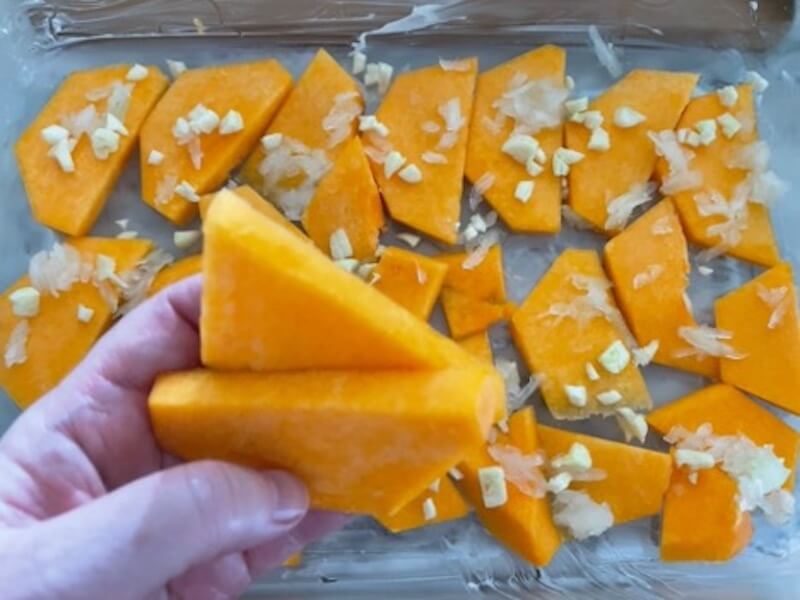
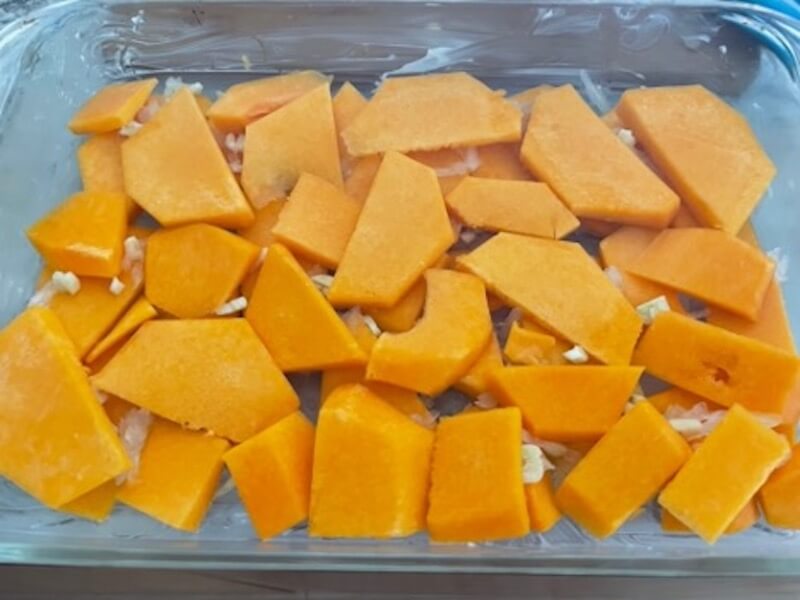
I was very pleased to find some very nice organic creme fraiche which has no added thickeners. The other image below shows the creme fraiche after it’s been boiled in the stock.
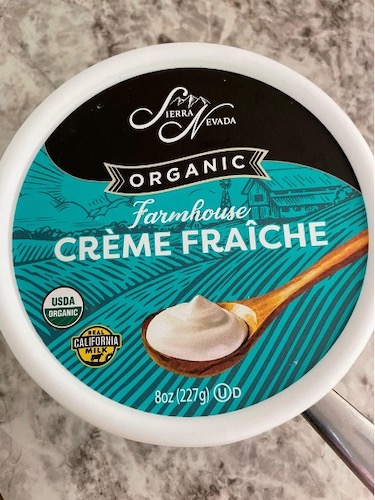
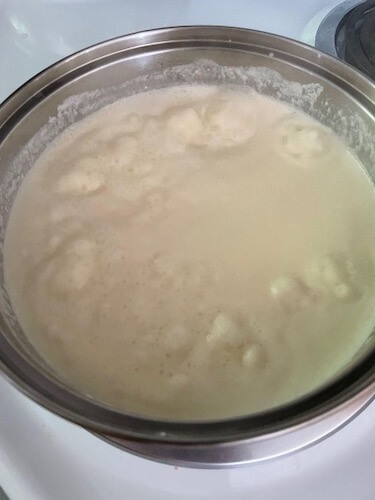
The next image shows what the layers of butternut and garlic/onion looks like covered with the creme fraiche/stock mixture i.e. it looks like it may be too much liquid but it really isn’t.
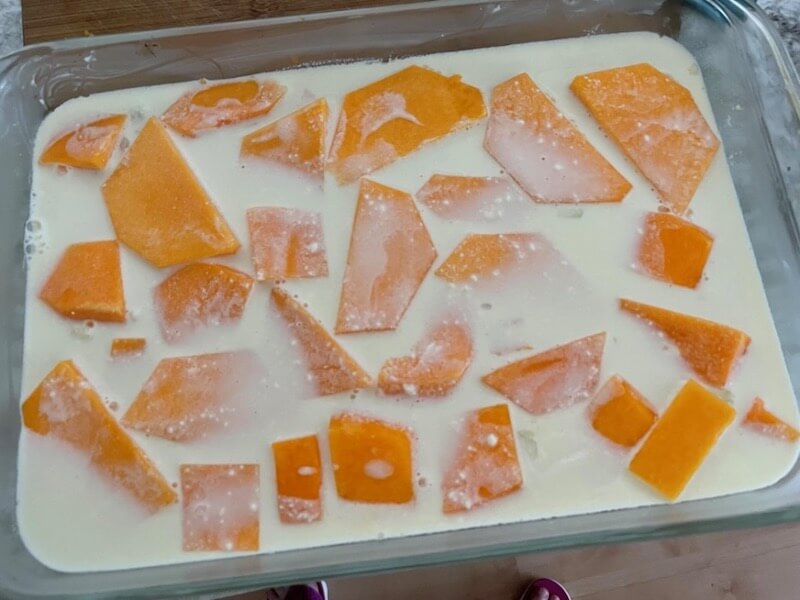
The bottom two images show what it looks like when the Butternut Bake is ready and comes out the oven, and then when it’s been served as a starter or side dish. There is a small amount of thick sauce.
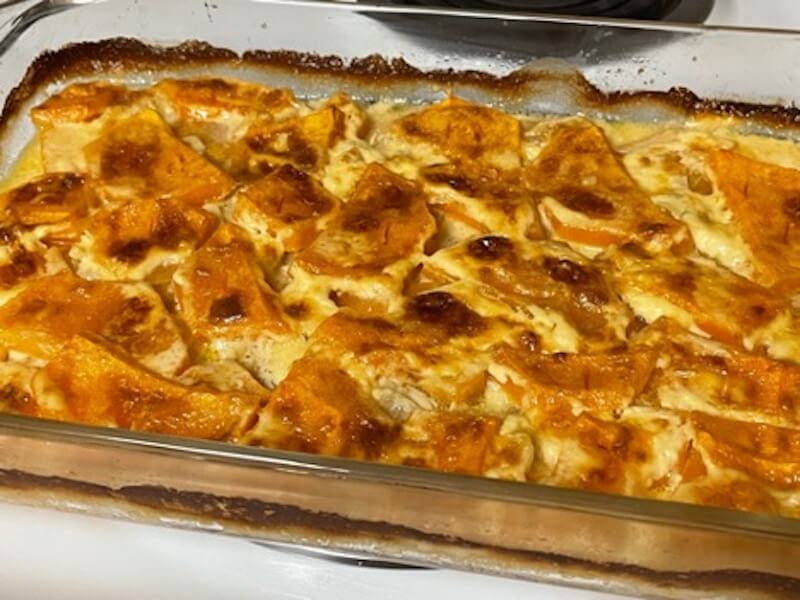
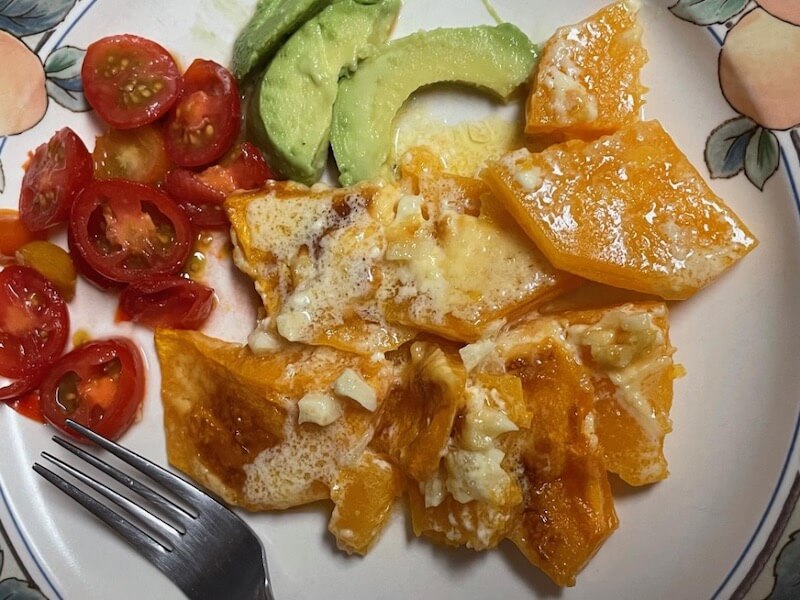
Why consider dietary oxalates as a possible issue?
This blog post is a good one to start with if you’re new to dietary oxalates and the issues they can cause: Oxalate crystal disease, dietary oxalates and pain: the research & questions
These are the common medium-oxalate and high-oxalate foods that many folks have problems with: nuts, nut-butters and nut-flour (something to watch when eating Paleo or GAPS), wheat, chocolate, kiwi fruit (very high – see the raphides image on the above blog), star fruit (also very high), beets, potatoes, sweet potatoes, legumes, raspberries, spinach and soy.
In the above blog post, I share an overview of oxalates, my pain issues with dietary oxalates (severe foot pain and eye pain), and deeper dive into the condition called oxalate crystal disease (with some of my insights and questions).
The big take-aways are that calcium oxalate crystals are sharp and can cause far reaching harm beyond pain – such as unresolved anxiety, thyroid issues, neurological symptoms, eye issues, hearing loss, bladder issues, headaches, fatigue, insomnia, restless legs, autism symptoms and more; and you can have issues with dietary oxalates and not have kidney disease/kidney stones (although there is very little research supporting the latter).
You may find these oxalate blogs helpful too:
- Waking in the night due to environmental toxins: impacts on the liver, gallbladder and fat digestion (making oxalate issues worse)
- Increased kidney stones in postmenopausal women with lower estradiol levels. What about increased dietary oxalate issues too?
What dietary oxalates issues have you experienced and has a low oxalate diet helped you?
Do let us know if you make this recipe and enjoy it.
Feel free to share a favorite recipe of something you’ve adapted to be low or even medium oxalate.
If you have questions please share them here too.
Wow! Trudy thanks for this recipe Butternut Bake. We tried it out. Sure like the use of the organic creme fraiche! Great substitute. It was delicious. Thanks also for the blog on dietary oxalates. We just got your book and are looking forward to learning and implementing natural solutions to anxiety.
Tenni
Wonderful and happy reading and learning. Do keep us posted on how you go
Hello – the butternut bake looks delicious! Thank you for the recipe.
I’ve a few questions:
(1) is this good with coconut milk? Would it need to be heated – but not boiled – and then add the broth until all is heated through, or must it reach boiling?
(2) If I chose to use sour cream, would that need to be heated through, then add the broth and heat through, or must it reach boiling?
(3) baking pumpkins will be going on sale soon; I’m wondering whether this could be made with pumpkin, or if you’ve tried that.
As a PS for pumpkins; butternut, acorn, delicata, honey nut squashes: I use a grapefruit spoon to scoop out the seeds and the stringy matter. It makes the process quicker for me.
Barbara
I have yet to try it with coconut milk and sour cream so don’t have an answer on the boiling question.
Pumpkin is a great substitute that is also low oxalate.
Thanks for the grapefruit spoon tip (smart!) and let us know what you end up using and how it turns out
I give this about a half a star. Ouch.
Runny water/liquid in the bottom. Onions did not cook and were raw and sharp. No flavor at all in this dish, despite the liberal application of salt and pepper (for which there were no measurements) and the use of my own home made chicken stock. The sour cream floated to the top and looked completely curdled, although it wasn’t. And the appearance was…well, I know my family wouldn’t touch it.
I’ll be eating it because I don’t waste food, but I doctored it up by draining the liquid in the bottom, sprinkled on some smoked paprika and some parmesan and put it back in for an additional 1/2 hour of baking. It was a bit more tolerable then. I feel like there were some big things missing from this recipe, like something got left out.
Moam7
Sorry to hear it was a flop for you. This is the exact recipe and ingredients I used to produce the end product you see in the images I share. I made it while staying at sea level and it cooked for 1.5 hours until the liquid was almost fully absorbed by the butternut.
Perhaps altitude or cooking duration or cooking temperature or using sour cream was the issue. I’m very curious to hear?
Good for you for rescuing it and eating it!
Do the butternut squash seeds contain oxalates? They are delicious baked in a bit of olive oil and lightly salted. I put them on a small shallow pan and bake them while I bake the squash.
Deb
I don’t know and I don’t see them listed on the TLO spreadsheet. I suspect they are also low oxalate. Love this idea by the way. Let us know how you react to them
Really appreciate all your postings. Hope to have more time soon to explore the clear categories and information. Copied your Butternut Cake recipe/pics a week ago, hope to make it soon.
Thank you.
Olga
Olga
Thanks for the feedback and let us know how the recipe goes!
Trudy,
Is the squash raw, or pre- baked?
Cathe
The butternut squash is raw. If pumpkin is used it could also be used raw but if potatoes are used they do need to be pre-boiled slightly.
Let us know how it goes